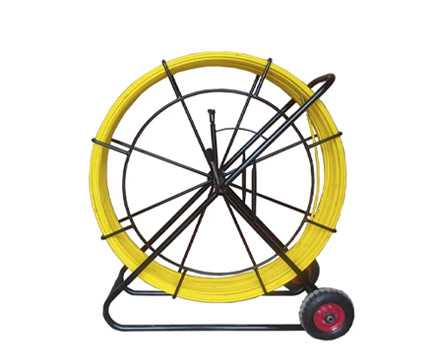
-
 Afrikaans
Afrikaans -
 Albanian
Albanian -
 Amharic
Amharic -
 Arabic
Arabic -
 Armenian
Armenian -
 Azerbaijani
Azerbaijani -
 Basque
Basque -
 Belarusian
Belarusian -
 Bengali
Bengali -
 Bosnian
Bosnian -
 Bulgarian
Bulgarian -
 Catalan
Catalan -
 Cebuano
Cebuano -
 Corsican
Corsican -
 Croatian
Croatian -
 Czech
Czech -
 Danish
Danish -
 Dutch
Dutch -
 English
English -
 Esperanto
Esperanto -
 Estonian
Estonian -
 Finnish
Finnish -
 French
French -
 Frisian
Frisian -
 Galician
Galician -
 Georgian
Georgian -
 German
German -
 Greek
Greek -
 Gujarati
Gujarati -
 Haitian Creole
Haitian Creole -
 hausa
hausa -
 hawaiian
hawaiian -
 Hebrew
Hebrew -
 Hindi
Hindi -
 Miao
Miao -
 Hungarian
Hungarian -
 Icelandic
Icelandic -
 igbo
igbo -
 Indonesian
Indonesian -
 irish
irish -
 Italian
Italian -
 Japanese
Japanese -
 Javanese
Javanese -
 Kannada
Kannada -
 kazakh
kazakh -
 Khmer
Khmer -
 Rwandese
Rwandese -
 Korean
Korean -
 Kurdish
Kurdish -
 Kyrgyz
Kyrgyz -
 Lao
Lao -
 Latin
Latin -
 Latvian
Latvian -
 Lithuanian
Lithuanian -
 Luxembourgish
Luxembourgish -
 Macedonian
Macedonian -
 Malgashi
Malgashi -
 Malay
Malay -
 Malayalam
Malayalam -
 Maltese
Maltese -
 Maori
Maori -
 Marathi
Marathi -
 Mongolian
Mongolian -
 Myanmar
Myanmar -
 Nepali
Nepali -
 Norwegian
Norwegian -
 Norwegian
Norwegian -
 Occitan
Occitan -
 Pashto
Pashto -
 Persian
Persian -
 Polish
Polish -
 Portuguese
Portuguese -
 Punjabi
Punjabi -
 Romanian
Romanian -
 Russian
Russian -
 Samoan
Samoan -
 Scottish Gaelic
Scottish Gaelic -
 Serbian
Serbian -
 Sesotho
Sesotho -
 Shona
Shona -
 Sindhi
Sindhi -
 Sinhala
Sinhala -
 Slovak
Slovak -
 Slovenian
Slovenian -
 Somali
Somali -
 Spanish
Spanish -
 Sundanese
Sundanese -
 Swahili
Swahili -
 Swedish
Swedish -
 Tagalog
Tagalog -
 Tajik
Tajik -
 Tamil
Tamil -
 Tatar
Tatar -
 Telugu
Telugu -
 Thai
Thai -
 Turkish
Turkish -
 Turkmen
Turkmen -
 Ukrainian
Ukrainian -
 Urdu
Urdu -
 Uighur
Uighur -
 Uzbek
Uzbek -
 Vietnamese
Vietnamese -
 Welsh
Welsh -
 Bantu
Bantu -
 Yiddish
Yiddish -
 Yoruba
Yoruba -
 Zulu
Zulu


Oct . 30, 2024 16:07 Back to list
'grounding cable 16mm2 - measuring wheel'
Understanding Grounding Cable 16mm² A Key Component in Electrical Safety
Grounding, or earthing, is a critical aspect of electrical safety in various applications, from residential buildings to industrial facilities. One of the essential components in grounding systems is the grounding cable, and specifically, the 16mm² grounding cable. This article aims to shed light on the significance, characteristics, and practical applications of this particular cable size, as well as integrating precision tools like measuring wheels in the installation process.
What is a Grounding Cable?
A grounding cable serves to connect electrical systems to the earth, providing a pathway for fault current to safely dissipate into the ground. This is essential for preventing electrical shock hazards and minimizing damage from lightning strikes or electrical surges. The choice of cable size is crucial; a 16mm² grounding cable is typically used in applications requiring a robust connection that can handle significant fault currents.
Characteristics of 16mm² Grounding Cable
The 16mm² grounding cable is made of high-quality copper or aluminum, with copper being the preferred material due to its superior conductivity and durability. The cross-sectional area of 16mm² indicates that the cable can effectively carry substantial electrical loads while maintaining minimal resistance. This is particularly important in lightning protection systems and in environments where a reliable grounding connection is critical.
'grounding cable 16mm2 - measuring wheel'

Moreover, the insulation and sheathing of these cables are designed to withstand harsh environmental conditions, ensuring longevity and reliability. The outer layer protects against moisture, UV rays, and mechanical abrasion, making them suitable for both indoor and outdoor installations.
Installation with a Measuring Wheel
When installing a 16mm² grounding cable, precision is essential. This is where tools like measuring wheels come into play. A measuring wheel allows electricians to measure distances accurately when placing grounding rods or planning cable runs. It ensures that the grounding system is installed according to safety regulations and best practices.
Using a measuring wheel not only improves the accuracy of installation but also enhances the efficiency of the workflow. By marking the appropriate distances and angles, electricians can ensure that the cable installation meets both the electrical code requirements and the specific needs of the system.
Conclusion
In summary, the 16mm² grounding cable is a vital component in ensuring electrical safety. Its robust design and excellent conductivity make it suitable for critical applications where grounding is indispensable. When combined with precision tools like measuring wheels, electricians can install these systems with confidence, enhancing safety and reliability in electrical networks. Understanding the role of grounding cables and employing the right tools is essential for anyone involved in electrical installations.
Latest news
What Are Construction Tools and How Are They Used?
NewsJul.11,2025
Professional-Grade Duct Rodding Tools for Superior Cable Installation
NewsJul.11,2025
Enhancing Safety and Efficiency with Modern Hot Stick Solutions
NewsJul.11,2025
Empowering Cable Installation with Advanced Rodder Solutions
NewsJul.11,2025
Elevate Your Cable Installation Projects with Cable Pulling Tools
NewsJul.11,2025
Efficient Cable Handling Solutions: Cable Rollers for Sale
NewsJul.11,2025











